The range of heaters is very wide, which greatly complicates the choice. We compare the most sought-after options - the oil radiator and convector.
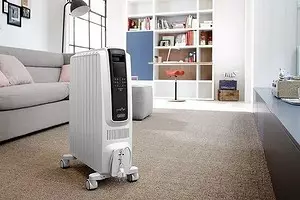
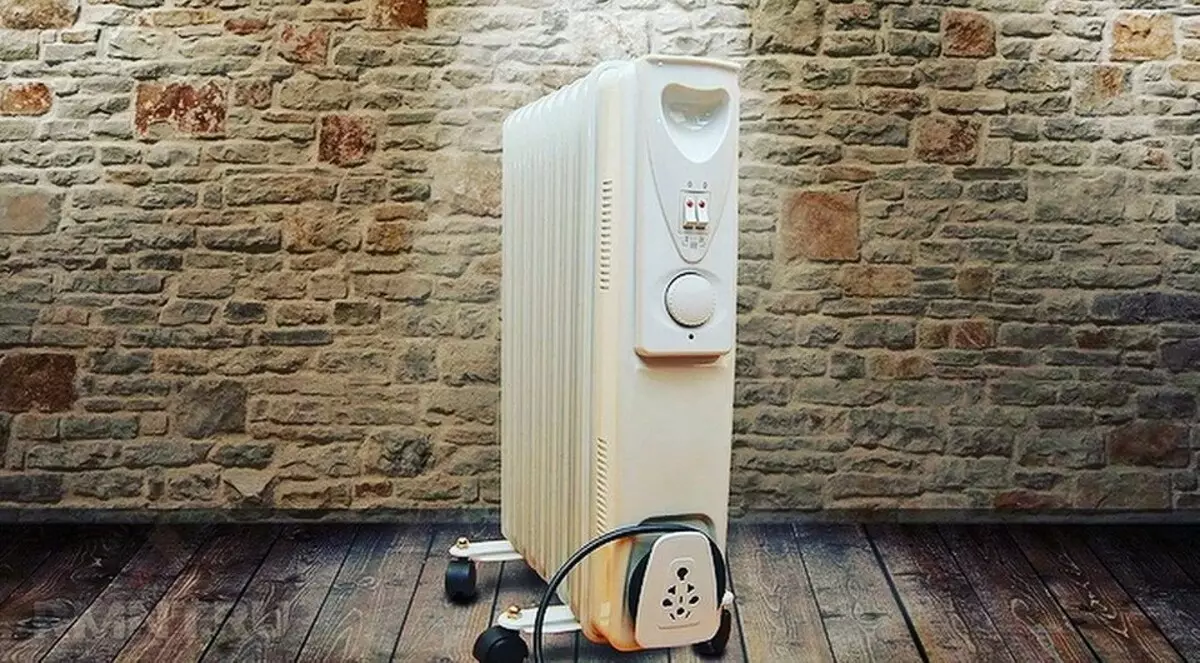
Connection to a centralized heating system does not guarantee a constant comfortable temperature of the house. By the beginning of the heating season and after his end, users manage to repeatedly frozen. Do without an additional source of heat is difficult. It will be unlikely for residents of private houses. Convector or oil radiator, what is better to choose in this situation? We'll figure out.
How the oil radiator works
The device was developed at the dawn of the appearance of electrical heaters and since then no special changes have undergone, the design was so successful. It is very simple and is a hull within which the TEN is located. To prevent corrosion and, accordingly, extend the service life, its internal part is filled with mineral oil. Given the high heat capacity of the latter, it accumulates a large amount of heat.
True, makes oil it is slow enough, so the equipment is inert. This is expressed in slow warming. But then, when the temperature comes to the specified values, it will warm the air for a very long time. Even after the TEN is no longer working. The device transmits heat by radiation. That is, its walls are heated and air is already heated from them. Best Heat transfer in ribbed units.
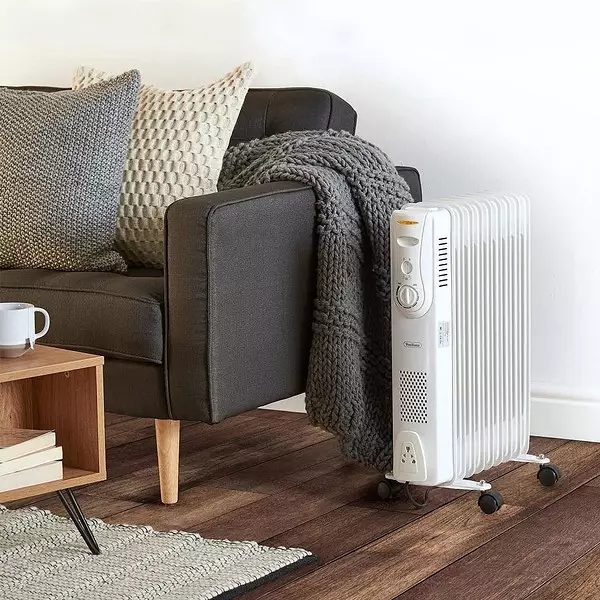
Ribbed models better give warm
-->It should be borne in mind that the housing can be very hot.
Random touch is fraught with unpleasant sensations and even a burn. It is possible to ignite items that are too close to the device.
Therefore, the safety rules cannot be neglected. Some models are equipped with a protective casing, which significantly reduces the risk of unpleasant situations.
Almost all oil heaters are equipped with switches of operation mode and indicators, it is more often a LED bulbs, but there may be full-fledged LCD displays. In addition, the thermostat is most often present. Usually an electromechanical type. It allows you to make the device work more efficient and maintain a given temperature in the room. The manufacturer necessarily puts the overheating protection sensor, which turns off the TEN with a strong heating.
Well, if the so-called position sensor or tipping is installed. It triggers when changing the position of the device. It should only work in a vertical position. If tipped, the oil may drain with the latter and the last brave. Heaters have a significant weight, so for the convenience of transportation they are equipped with wheels. Thanks to this, they are quite mobile.
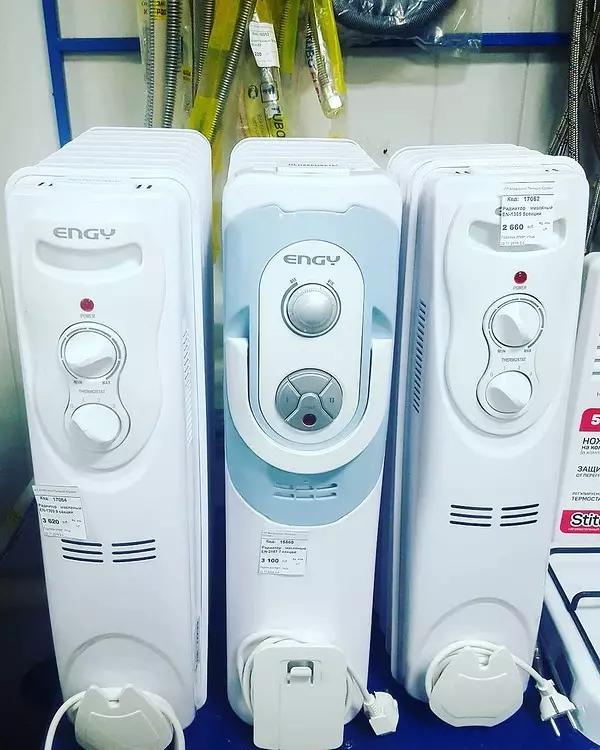
Oil radiators control panels may look different
-->Pros and cons of the device
Such heaters are in demand for more than a dozen years and it is no coincidence. These are quite a lot of advantages:
- Significant area of heat exchange. Better with this task, aggregates with ribbed corps are coping with, but also flat too.
- Easy design, which determines the reliability and durability of the product. For the same reason, their value is relatively low.
- For work, heat radiation is used, so directional air flows appear that provoke drafts and carry a large amount of dust.
- Mobility and simplicity of installation.
Disadvantages are definitely present, but they can be corrected. The main is the inertness of the aggregate. It warms it very long. If you want to speed up the process, select models with a fan or with a casing in which vertical channels are present. Both of these varieties create air flows that warm up the room is much faster.
The minuses include incorrect operation of the thermostat. This is due to the fact that it is built into the heating case. For this reason, it is quite difficult to effectively adjust the temperature in the room. Devices are heavy and cumbersome, they occupy a lot of space. In addition, they are sufficiently dangerous, because they can cause a fire or burns. "Weak link" design is a welded body where microcracks may appear. Eliminate them is inappropriate, it is easier to buy a new unit.
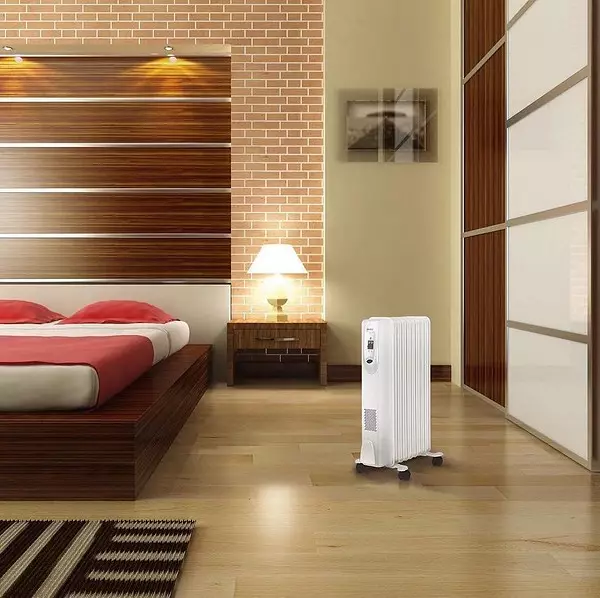
Oil radiators are not recommended to be placed close to the wall. Their body can warm up when working
-->Principle of action convector
The device heats the room by creating convection warm streams. They are moving throughout the volume of the room and quickly raise the temperature in it. The design of the device optimally solves this task. It has a flat elongated housing, the shape of which creates a kind of aerodynamic tubuum. Cold air enters through the bottom holes inside and falls on the TEN.
Initially, it was a needle device, working similarly to incandescent spirals. Modern varieties are equipped with solid or covered aluminum "shirts" heaters. Here the air is heated and rises to the upper holes. They can be equipped with blinds, then the owner has the ability to regulate the intensity of the jet and direct it into different parts of the room.
The device can be equipped with automatic. At the bottom, where the cold stream is coming, there is a thermostat. Due to its location, it receives accurate readings, so the system works very effectively. Recent modifications "know how to" maintain a comfortable temperature at different times of the day and even depending on the day of the week. The owner needs only to program it.
The obligatory element is the protection system. This is a sensor that turns off the machine in case of overheating. There are two versions of the equipment: wall and outdoor. The first is good because it takes a minimum of space. The second attracts mobility. There are combined varieties that combine both of these properties. They are probably the most convenient as possible.
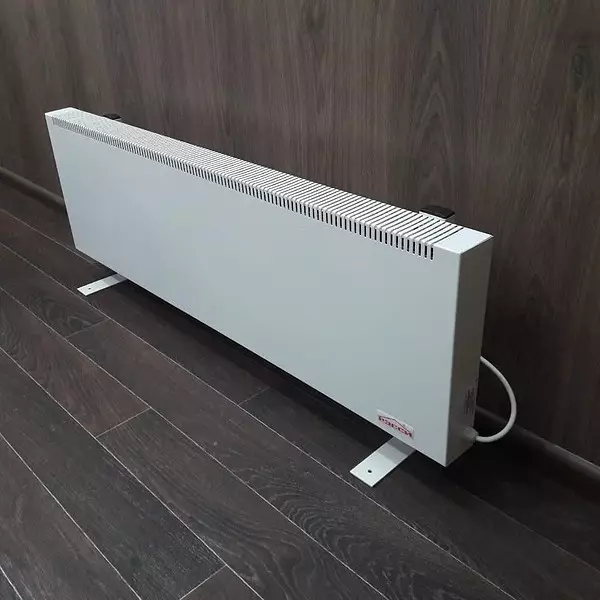
Outdoor convector is very mobile, it can be transferred from place to place.
-->Advantages and disadvantages of the device
Reviews, which is better, the oil radiator or convector will differ in the estimates, but they are clearly visible advantage of convector-type device:
- Quickly heats the room due to the active movement of air flows.
- The automation works more precisely than the oil counterpart. The degree of heat heating is easily adjustable.
- The lack of a feeling of "drying air" and the smell of burnt dust, since the TEN is closed.
- Models are produced in enhanced protection housings that are not scattered splashes. They can be installed in the bathrooms.
- The casing of the device never warms up to dangerous temperatures. It is impossible to burn it, the accidental ignition closely located is also excluded.
- Equipment, especially wall-mounted, compactly and does not occupy a lot of space.
All consumers are associated with the presence of convective streams. At the very beginning of the device, they are pretty cold, which can be felt like a light draft. Some it is very unpleasant. In addition, air masses are carrying dust that is spilled around the room. More careful regular cleaning is required.
Converter heating is ineffective for large areas and high rooms. The optimal height is not more than 3 m. Otherwise, the kinetic potential of the heated flow is lost, which significantly worsens heat exchange. The upper part of the room is overheated, and in the bottom is cool.
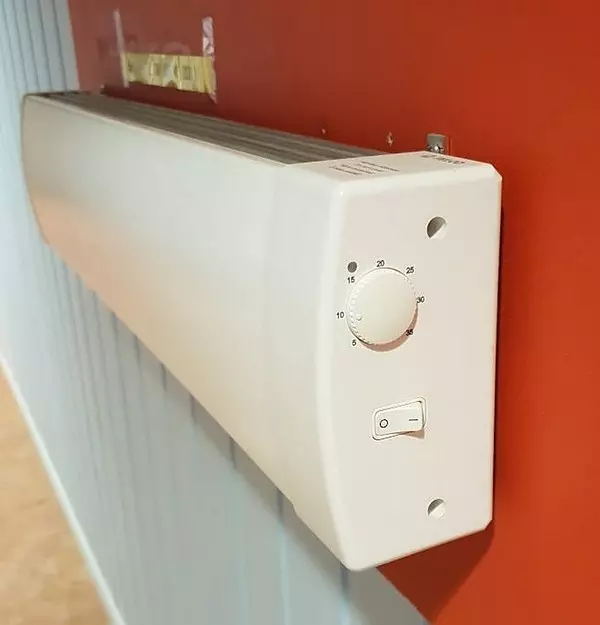
Wall-mounted models are very compact and easy to operate
-->What radiator, oil or convector, better warms the room?
We must admit that there is no leader here. Both devices are well heated home, but do it in different ways. The radiator uses radiation, convector - convection. Therefore, the first warms the air for a long time in the room, but at the same time slowly cools and continues to warm even after shutting down. The second quickly "cattures" the desired temperature, but it is necessary to include it often, since it cools it too quickly.
The radiator is good for inpatient use in the house with permanent accommodation. For heating the place of temporary stay, for example, cottages, it will not fit: after switching on, it will have to wait a lot to wait for a very long time. The convector will cope much faster and more efficient. The latter is able to work without the presence of the owner. It will maintain the minimum temperature in the absence of the owner and will raise it to comfortable to his return.
Thus, it is impossible to say that some of the devices warms better. Under the condition of competent selection, they are both effective. It should be remembered that the convector is useless on large areas and in high rooms. But his opponent in such conditions will be more difficult to achieve a good result.
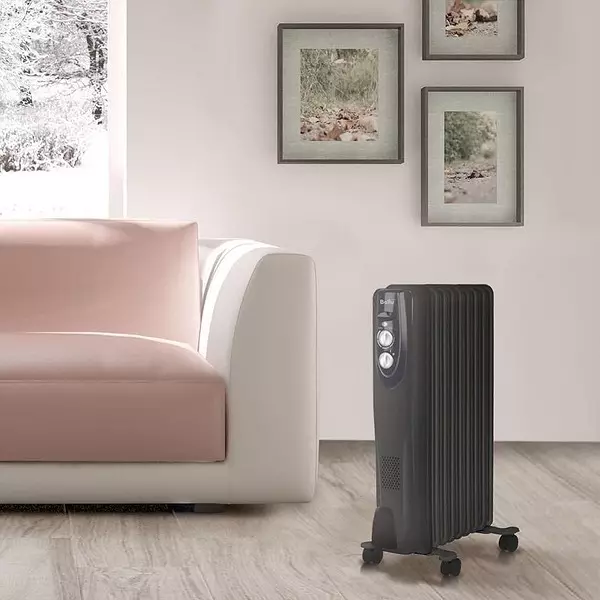
If necessary, a mobile oil radiator can be delivered where heat is urgently required
-->What to choose: Oil radiator or convector
To finally decide on the choice, we compare the important characteristics of both options.
- Safety. Systems of its collateral are present in all devices, their quantity depends on the model. All other things being equal, oil systems are more dangerous. Heating the case becomes a potential threat to fire or burn. In addition, a closed volume filled with hot liquid is always dangerous than the possibility of an explosion. Let his probability and very small.
- Ecology. Like all electrical equipment, devices are safe for humans. Contrary to popular belief, they do not "burn dust" and do not overcame air. On the contrary, ionizers and humidifiers can be embedded in them, which significantly improve the microclimate. However, convectors who provoke dust transfer, and with it and microorganisms, this reduces the quality of air in the house.
- Efficiency. Efficiency of both types of systems above 90%. This suggests that almost all electrical energy is transformed into thermal. Consumption in aggregates is about the same. Due to different types of heating, working cycles differ, as a result of which the myth that radiators are more economical.
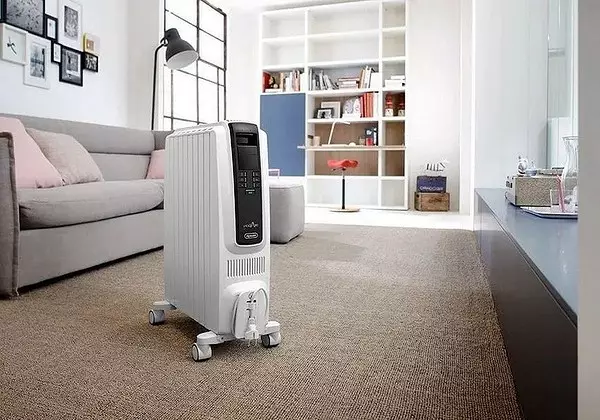
The oil radiator is heavy, but it is easy enough to move along the floor with the help of wheels that each device is equipped with
-->Unambiguously call the best device is impossible. Still, they are too different and designed for various operating conditions. More modern and safe, unconditionally convector, but the oil apparatus is convenient to operate and unpretentious in maintenance. The final choice for the buyer who knows exactly what conditions the device will have to work.




